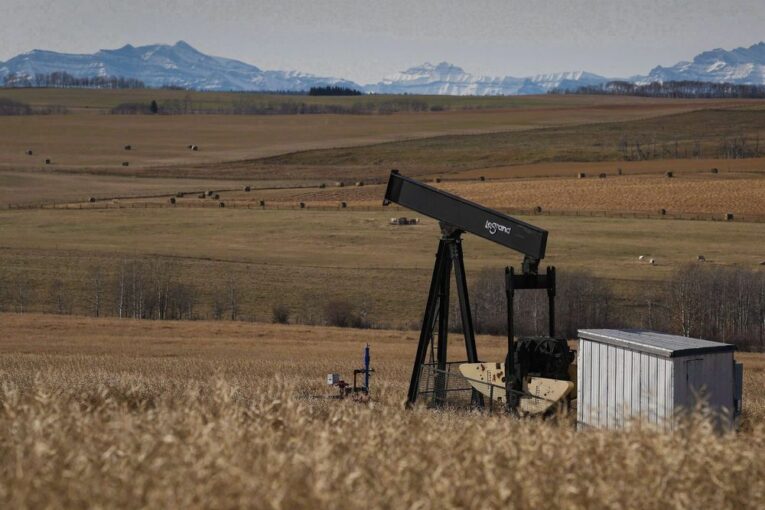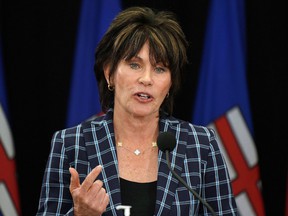
As oil prices climb toward US$90 a barrel, it might seem like a curious time to talk about the problem of orphan and idle wells in Alberta.
Yet, this is an opportune moment to restart the conversation, as producers have renewed financial might to tackle the issue, compared to the early days of the pandemic when oil prices tanked.
A report from the Parliamentary Budget Officer (PBO) this week shines another light on the issue in Canada.
It estimates the total cost of cleaning up all onshore orphan wells, where no owner exists to pay for the work, at $361 million in 2020, climbing to $1.1 billion within three years.
“This rising cost poses a risk to not only provincial but also federal fiscal balances,” it states.
The study says another 7,400 abandoned wells in the province (as of 2020) don’t have a solvent owner and will require cleanup work, although Alberta’s energy minister and those in the industry are puzzled by the findings.
The head of Alberta’s Orphan Well Association (OWA) said higher oil and gas prices have bolstered the ability of petroleum producers to look after such bills.
“We really haven’t seen any new insolvencies since prices reached even $50, so I’m not sure we are going to see anything (more) until prices come down,” said association executive director Lars De Pauw.
“We are in a better spot today than we’ve been for the last seven years.”
-
Budget officer finds $1B orphan well liability by 2025; critics claim underestimate
-

Former oil and gas worker explores Alberta’s ‘orphaned’ wells in new documentary
-

‘Blindsided’: Alberta farmers fret as regulator eyes moving bankrupt company’s idle oil wells to new insolvent firm
-

Alberta revamping rules for oil and gas wells to prevent future backlog of orphan, inactive sites
The issue fell under the PBO’s scrutiny after the federal government earmarked $1.7 billion in 2020 to clean up both orphan and inactive wells in Western Canada, creating jobs in the oilfield services sector.
Ottawa provided $1 billion to Alberta for a provincially operated program to tackle wells that haven’t produced oil or gas for many months or years.
A $200-million loan was also given to the OWA, a non-profit group responsible for taking care of a well in Alberta when there’s no operator left to pick up the tab.
The group is primarily funded by an annual levy on producers, which hit $70 million last year, although it has received loans from provincial and federal governments.
The report noted the inventory of orphaned wells in Alberta increased from 700 in 2010 to about 8,600 a decade later.
“We looked at the liabilities for orphan wells, or wells that are likely to become orphan over the next five years, and the funding provided by the feds seems to be sufficient,” Parliamentary Budget Officer Yves Giroux said in an interview.
“Given that some of the money has already gone to profitable companies, or corporations that are financially viable, if that trend continues, there could be insufficient funds to clean up all the orphan wells.”
Alberta Energy Minister Sonya Savage said the report appears to mix up two issues: federal loans to clean up orphaned wells and a separate program to address inactive ones, where an owner is still in place.
Under Alberta’s Site Rehabilitation Program, more than half of the $1 billion provided to the province has gone to pipeline, well-site abandonment and environmental work — bills that typically fall to the operator — with grants paid to oilfield services firms.
“They seem to bounce all over the place and not really know what they’re talking about,” Savage said in an interview.
“The report gets so many things conflated and confused that it’s really not of much value at all.”
The program has created more than 2,400 jobs, according to the province.

De Pauw is puzzled by suggestions the orphan well problem is growing and total liabilities will increase to $1.1 billion, as the association’s own estimate sits around $650 million and is falling.
The PBO said it estimated the number of wells it expects will become orphans by using models that forecast the risk of corporate defaults.
“If oil prices keep on rising . . . it’s very likely this issue will be less acute than it otherwise would be,” said Giroux. “But oil prices are very volatile.”
The report triggered skepticism in several corners.
“It starts to give a picture of the scale of the challenge, but is leaving out some big costs,” said Sara Hastings-Simon, director of the University of Calgary’s masters in sustainable energy development program. She noted the study doesn’t include remediation expenses.
Data from the Alberta Energy Regulator shows total oil and gas industry liability, excluding costs tied to the oilsands, sits at $30 billion.
Regan Boychuk of the Alberta Liabilities Disclosure Project, which has previously pegged the cost of cleaning up 300,000 unreclaimed wells in the province at between $40 billion and $70 billion, said the PBO’s “headline number is ridiculously small.”
Today, 2,326 orphan wells across Alberta need to be decommissioned and another 5,421 sites require reclamation, according to the OWA. De Pauw anticipates the number of wells will fall to about 1,100 by the beginning of April.
As for inactive wells, the Alberta Energy Regulator says the number has increased from 76,000 eight years ago to 93,000 last month.
The regulator has adopted mandatory industry-wide spending targets for well closure work by producers, beginning this year at $422 million and rising by five per cent annually through 2026.
Tristan Goodman, head of the Explorers and Producers Association of Canada, said companies that struggled financially during the oil-price collapse in early 2020 are “starting to right that ship” and are planning to spend more on well closures.
“We are actually going in distinctly the right direction here,” he said.
With the energy transition ongoing and oilpatch cash flow levels headed to $100 billion this year, Hastings-Simon believes the AER needs to boost its spending targets and implement firm timelines for when companies must deal with idle wells.
She wonders why Alberta’s Site Rehabilitation Program is providing public money to clean up wells when many producers are now profitable.
“The risk is that we keep kicking this can down the road,” she said. “Now is a chance to address that.”
Chris Varcoe is a Calgary Herald columnist.
You can read more of the news on source
